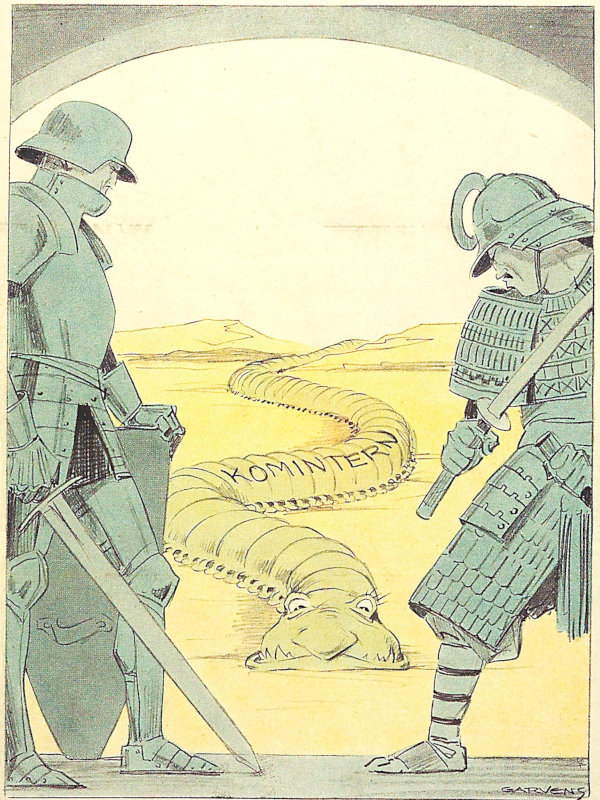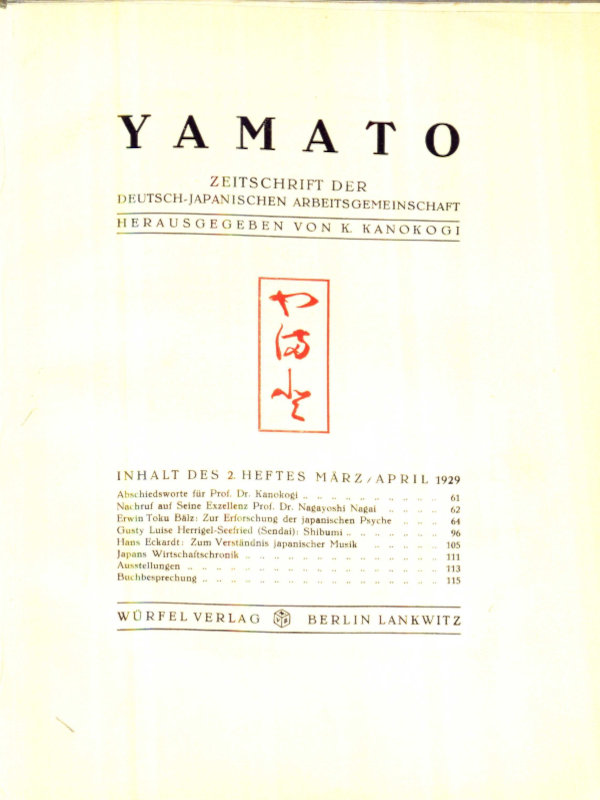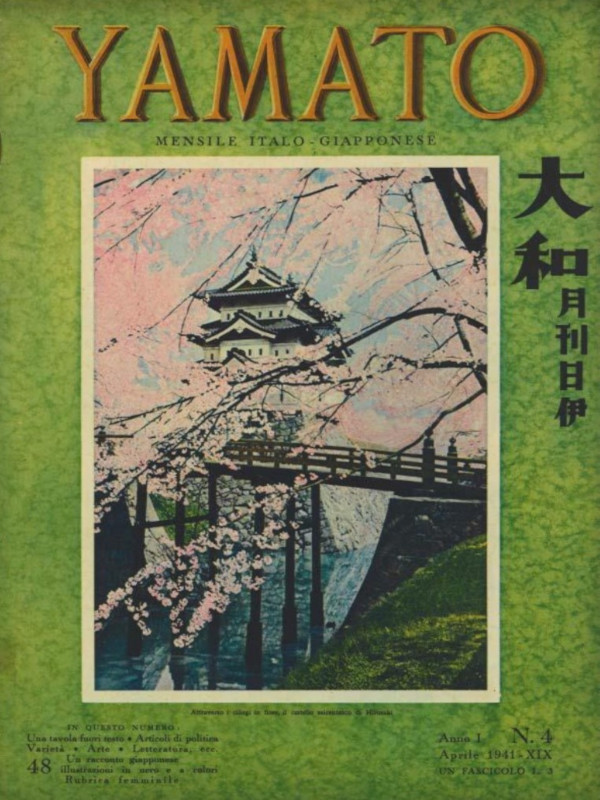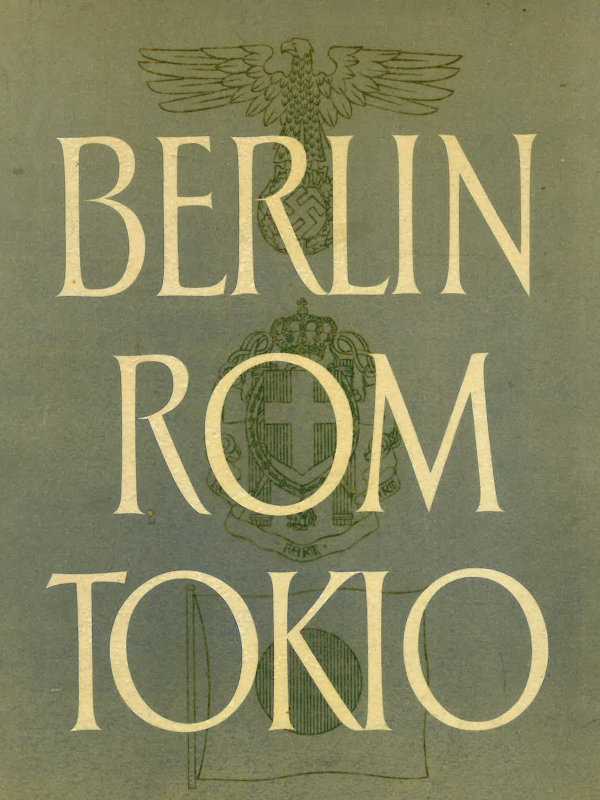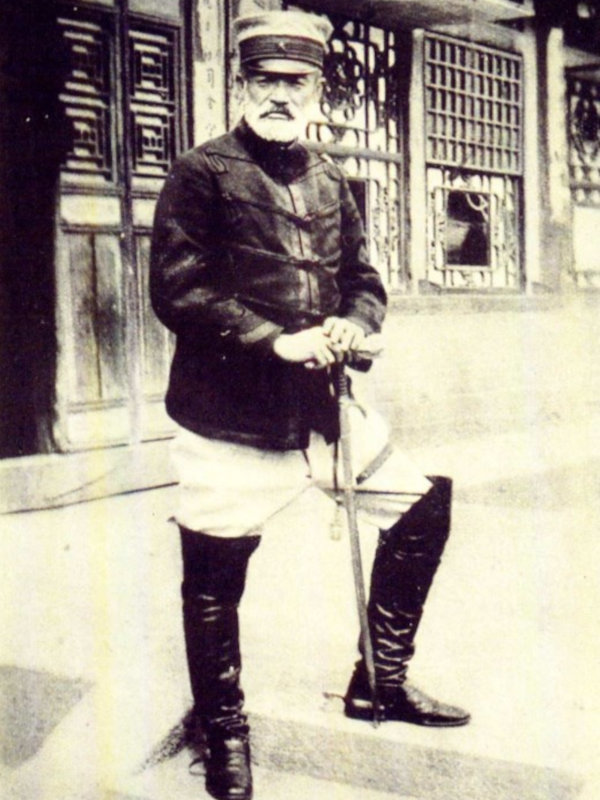YTOPIA
Yamatology of the Axis. Japan as a Nazi-Fascist Utopia of Political Renewal
About
YTOPIA explores the origin and development of political discourses on Japan - something that can be called ‘yamatology’ instead of japanology - by focusing on the historical moment in which they reached its wider dissemination and became integral parts of far-right ideologies. The aim of YTOPIA is to analyse comparatively the discursive construction of the image of Japan in Nazi Germany and Fascist Italy.
Instead of offering an overview on the European representations of Japan or focusing on a national case study, YTOPIA will carry out a detailed analysis of Nazi-Fascist yamatological representations, by considering them as result of a dialogical interaction between European and Japanese actors, as well as a constituent element of the Axis’ cultural policies closely related to many of the ideological features shared by both Fascism and Nazism.
YTOPIA’s ultimate goal is to highlight the utopian dimension of yamatological representations, by considering them as political discourses conveying values and aspirations of the ideological framework in which they were produced, as well as intellectual means to criticise the gap between the idea of a new kind of society and the socio-political reality of the time.
What is yamatology?
The term ‘yamatology’ appeared in Europe in the second half of the 19th century (e.g., 4th International Congress of Orientalist, 1878) to describe the study of Japanese history and culture. Before the First World War, the term fell into oblivion in most European countries, but in Italy became the favourite synonym for japanology, enjoying a wide diffusion especially during the 1930s. Today, the term yamatology (i.e., yamatologia or iamatologia) is still used by Italian orientalists as an old-fashioned way to refer to Japanese studies. Nevertheless, yamatology is not a neutral word. Referring to the ancient toponym of Japan (大和), and hence to the idea of 大和民族 (Yamato minzoku, i.e. Japanese race) and 大和魂 (Yamato-damashii, i.e. Japanese spirit), yamatology can be considered etymologically as “discourse on the authentic and timeless nature of Japan”, and can be therefore distinguished from both japanology and japonism because it subsumes political evaluations rather than focusing only on philological or aesthetic considerations. Therefore, YTOPIA aims to re-semanticise the term of yamatology to indicate the political discourses on Japan which emerged in the late 19th century and became mainstream until 1945, lasting until today in far-right milieus.
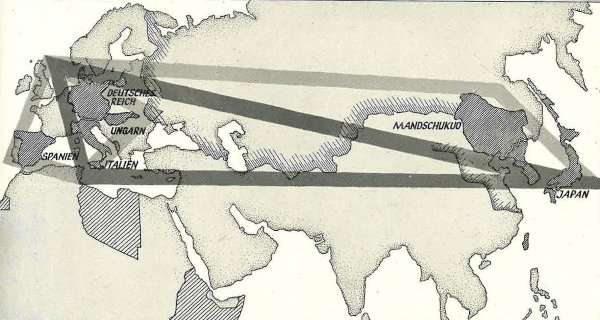
Partners
- Outgoing phase (01/08/2022-30/04/2024): Kyoto Sangyo University, Japan
- Supervisors:
- Prof. Kimio ITŌ
- Prof. Sho SUGAWARA
- Supervisors:
- Secondment (01/05/2022-31/07/2022): University of Konstanz, Germany
- Supervisor: Prof. Sven Reichardt
Research
The overall objective of YTOPIA is to analyse the discursive construction of the image of Japan in National Socialist Germany and Fascist Italy, as well as its relations with ideological features shared by both regimes (‘fascist minimum’).
The project is structured around four specific objectives.
Definition of yamatology
Yamatology will be defined by reconstructing the history of modern japanology and by analysing its discursive interactions with political ideas and other intellectual currents.
The leading question is whether - and to what extent - yamatology has to be considered as an ideological appropriation of japanology or a coherent development of previous orientalistic discourses dialectically related to both academic japanology and the aesthetic of japonism.
To that end, it will be necessary to take into account japanological discourses and the popular image of Japan in a broader perspective (including at least French and English spheres) from 1870s onwards, as well as the impact of Japanese self-representation on the European image of Japan.
The aims are to describe the changing of the image of Japan in reaction to international developments and to understand how the political image of Japan - which raised initially in liberal, nationalist, and even socialist environments - became monopolised by far right-wing thinkers and movements.
Comparative discourse analysis
The development of German and Italian images of Japan in the interwar period will be analysed, with focus on the years 1935-43, by comparing and contrasting the cultural, social, and political characterizations of Japan that they conveyed, as well as by identifying counter-discourses and counter-images both within (‘yellow peril’) and outside (Eurocentric world views) yamatology.
Particular attention will be paid to narratives about Japanese feudalism and modernization, religion, customs, military virtues, aesthetic, gender relations, political doctrines and structures.
By the same token, and considering the concept of nation as imagined community, YTOPIA will take into account their representations of Germany and Italy, as well as of Nazism and Fascism, in order to reconstruct interrelations between the discursive construction of the ‘Self’ and the ‘Other’.
Discussion analysis
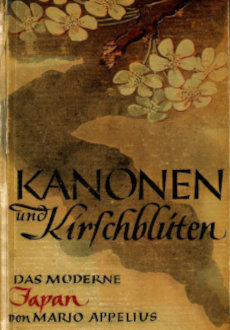
YTOPIA will reconstruct the ‘yamatological discussion’ between German, Italian, and Japanese actors, with focus on identifying intellectual and political networks, transfers of ideas and interpretative models, translations of works, establishment of official and unofficial collaborations, academic exchanges, and intellectual or political controversies in the framework of the so-called “cultural Axis”.
Analysis of the political role of yamatology
The utopian dimension of yamatological discourses will be analysed by focusing on two aspects: the utopian representation as intellectual expedient for voicing criticisms of existing society; the role of the utopian representation of Japan in fascist political systems, which integrated yamatological utopias in their ideological framework.
Yamatological representations will be therefore considered in their connection with common features of fascist ideology, such as the ‘universal’ mission of fascism as alternative to liberalism and communism, the plans for the post-war new order, the realisation of a political system in accordance with the principle of authority, the relationship between religion and politics, the harmonisation between tradition and modernity, and the creation of a fascist ‘New Man’.
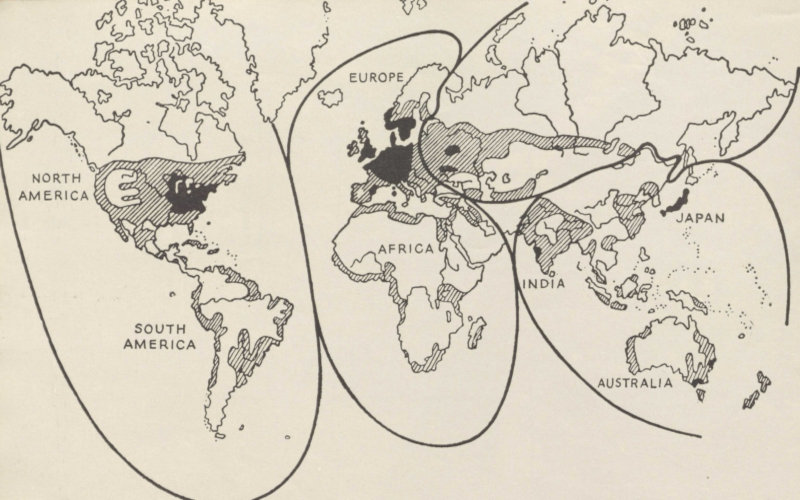
Publications
- [article in edited volume] Nel segno del Tripartito. Karl Haushofer in Italia tra geopolitica e yamatologia, in: E. D’Annibale, E. De Longis, B. Mantelli, F. Trocini (ed.), All’ombra dell’Asse: le relazioni tra Italia e Germania negli anni Venti e Trenta [ITA], Istituto di Studi Germanici, Rome 2025
- [article in edited volume] Tra esotismo ed eroismo. Bartolomeo Balbi e lo sviluppo dell’immagine del Giappone in Italia durante la prima metà del Novecento, in: D. Cucinelli, L. Frezza, I. Sagiyama, A. Yoshida (ed.), “Le sfaccettature della bellezza. Raccolta di scritti sul Giappone” [ITA], Edifir, Florence 2025
- [article in edited volume] Lebensraum-Spazio vitale-Seikatsukūkan. Da teoria biogeografica a strumento politico per la definizione di un nuovo ordine [ITA], in: M. Marconi (ed.), Spazio vitale. Un concetto geopolitico controverso [ITA], Carocci, Rome 2025
- [book review] Über die Schwelle. Die Familie Haushofer in Kunst, Wissenschaft und Politik [DEU] by Gerd Holzheimer, in Zeitschrift für bayerische Landesgeschichte, 2025
- [book review] L’Europa fascista. Dal “primato” italiano all’asservimento al Reich (1932-1943) by Monica Fioravanzo, in: Il mestiere di storico, 1-2, 2023
- [journal article] Abweichende Perspektiven einer geteilten Propaganda. Die visuelle Darstellung Japans im faschistischen Italien und in NS-Deutschland [DEU], in: OAG Notizen, 10, 2023
- [book review] Klaus Pringsheim aus Tokyo. Zur Geschichte eines musikalischen Kulturtransfers by Ralf Eisinger, in: Central European History, 55, 2023
- [journal article] Dal Lebensraum allo spazio vitale [ITA], in: Geographica Helvetica, 4, 2022
- [book review] Searching for Japan: 20th Century Italy's Fascination with Japanese Culture by Michele Monserrati, in: Modern Italy, 1-2, 2022
- [book review] Die Achse. Berlin-Rom-Tokio 1919-1946 [ITA] by Daniel Hedinger, in: Diacronie, 52, 2022
News and events
- 26/09-31/10/2025 - “Nippomania di regime” [ITA]
Six-episode podcast in collaboration with Radio Ca’ Foscari
- 06/05/2025 - “Svastiche, fasci littori e soli nascenti. Il Giappone nell'immaginario dell'estrema destra europea dai primi del Novecento a oggi” [ITA]
Public speech at the Municipal Council Hall of Cascina (PI)
|
|
28-29/04/2025 - “Divergent Orientalism: Re-Imagining Japan in Continental Europe, 1900s-1940s”
Conference at Ca’ Foscari University of Venice |
705 KB |
|
|
16/04/2025 - “Samurai immaginari. Perché l’estrema destra è affascinata dal Giappone” [ITA]
Public speech at Circolo ARCI L’Ortaccio, Vicopisano (PI) |
540 KB |
|
|
13/02/2025 - “Confronting an Uneasy Model: Representations of Japan’s Latecomer Empire in National Socialist Germany and Fascist Italy”
Presentation at the conference "Among Empires: Transimperial Circulation of Political Models", Turin-Vercelli |
336 KB |
|
|
06/02/2025 - “The Ultranationalist Trap: Re-Examining the Cultural Diplomacy of the Berlin-Rome-Tokyo Axis”
Presentation at the Cultural Diplomacy Workshop, Liverpool John Moores University |
305 KB |
- 13/09/2024 - "L’alleato ideale. Elementi per un confronto tra l’immagine del Giappone nell’Italia fascista e nella Germania nazionalsocialista"
Presentation at the congress of the Italian Association for Japanese Studies (AISTUGIA) [ITA], Bergamo
|
|
19/10/2023 - “Introduction to the research project: Yamatology of the Axis. Japan as Nazi-Fascist Utopia of Political Renewal”
Presentation of the project at the Yamato University, Osaka |
178 KB |
|
|
14-15/10/2023 - "The Axis Reconsidered: Global Fascism, Mutual Representations, and Cultural-Political Relations"
Conference at the Kyoto Sangyo Univeristy. Video of panel 1; Video of panel 2-3 and final discussion. |
218 KB |
- 16/09/2023 - "Tra esotismo ed eroismo. Bartolomeo Balbi e lo sviluppo dell'immagine del Giappone in Italia durante la prima metà del Novecento" [ITA]. Presentation at the congress of the Italian Association for Japanese Studies (AISTUGIA), Florence
- 10/05/2023 - “Abweichende Perspektiven einer geteilten Propaganda. Die visuelle Darstellung Japans im faschistischen Italien und NS-Deutschland” [GER], Conference at the Deutsche Gesellschaft für Natur- und Völkerkunde Ostasien (OAG), Tokyo
|
|
22/10/2022 - “Karl Haushofer in Italia tra diplomazia culturale, geopolitica e yamatologia 1934-39” [ITA]
Presentation at the conference “Convergenze e divergenze tra ‘regimi’. Le relazioni culturali tra Italia e Germania nel periodo interbellico”, Villa Sciarra, Rome |
786 KB |
|
|
12/05/2022 - “Das Japanbild im faschistischen Italien und NS-Deutschland. Parallelentwicklungen, gegenseitige Einflüsse und Forschungsperspektiven” [GER]
Conference at the University of Konstanz |
150 KB |

